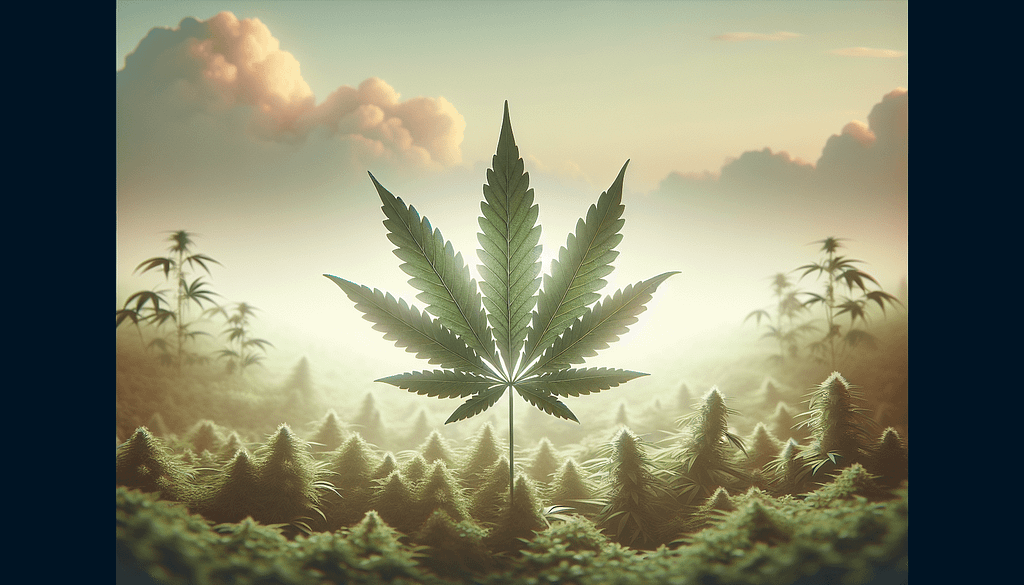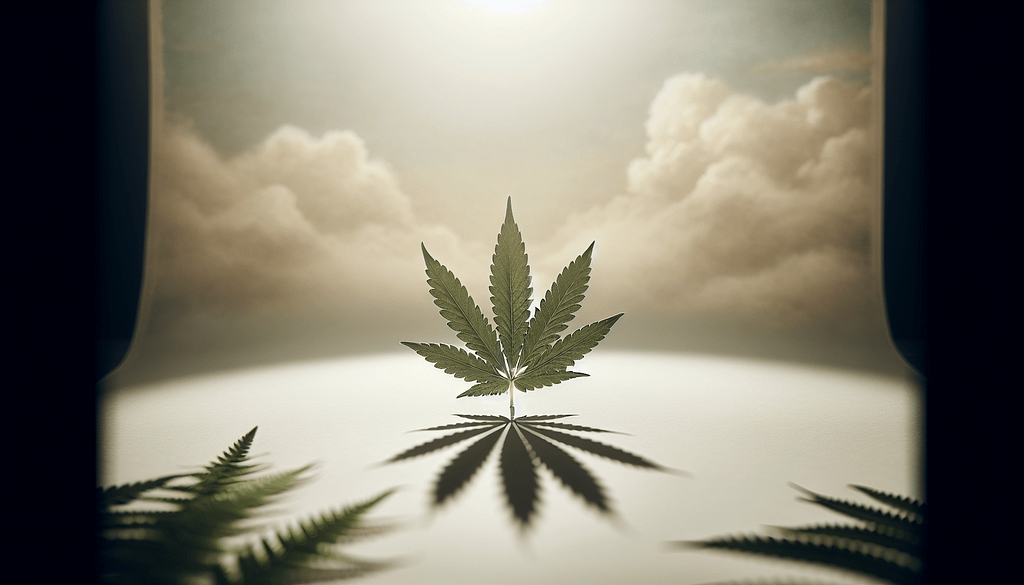As an Amazon Associate I earn from qualifying purchases.
Discover natural ADHD solutions for children with CBD. Learn about its benefits, safety, and how it can be incorporated into your child’s health regimen effectively.
Natural ADHD Solutions: The Role Of CBD In Children’s Health
Finding natural solutions for ADHD (Attention Deficit Hyperactivity Disorder) in children is a priority for many parents. You’re likely seeking alternatives that could effectively support your child’s health without adverse side effects. One promising natural option that has garnered attention is CBD (cannabidiol). In this article, we will explore the potential benefits of CBD for children with ADHD and provide a detailed understanding of how it works, its safety, and how it might fit into your child’s health regimen.

Introduction to ADHD in Children
ADHD is a common neurodevelopmental disorder that affects millions of children worldwide. It manifests as a mix of persistent issues, including difficulty maintaining attention, hyperactivity, and impulsiveness. These symptoms can cause challenges in academic performance, social interactions, and overall quality of life.
Current Treatment Options for ADHD
Traditionally, ADHD is managed through a combination of behavioral therapies and medications, such as stimulants (e.g., Ritalin and Adderall). While these medications can be effective, they often come with a host of side effects, including insomnia, decreased appetite, and mood swings. As a parent, you might be searching for alternative treatments that pose fewer risks and more natural benefits for your child.
What is CBD?
Cannabidiol, commonly known as CBD, is one of the many chemical compounds found in the Cannabis sativa plant. Unlike THC (tetrahydrocannabinol), which is the psychoactive component responsible for the “high” associated with marijuana, CBD does not produce euphoric effects. Instead, it is primarily used for its potential therapeutic benefits, which include anti-inflammatory, anti-anxiety, and neuroprotective properties.
How CBD Works with the Endocannabinoid System
The endocannabinoid system (ECS) is a complex network of receptors and neurotransmitters in the brain and body that regulates various physiological processes like mood, sleep, appetite, and pain sensation. CBD interacts with the ECS by binding to its receptors (CB1 and CB2) and helping to maintain homeostasis, thereby potentially mitigating some of the symptoms associated with ADHD.
Scientific Research on CBD and ADHD
While research specifically focused on CBD and ADHD is still in its early stages, several studies have shown promising results. For instance, some research indicates that CBD can help reduce anxiety, improve focus, and promote better sleep — symptoms often experienced by individuals with ADHD. Moreover, preclinical studies suggest that CBD may have neuroprotective effects, which could be beneficial for managing neurodevelopmental disorders.
Benefits of Using CBD for ADHD Symptoms
Improved Attention and Focus
One of the hallmark symptoms of ADHD is difficulty maintaining attention. Preliminary research and anecdotal evidence suggest that CBD may help improve focus by interacting with dopamine receptors in the brain. Dopamine is a neurotransmitter that plays a crucial role in attention and motivation.
Reduction in Hyperactivity
Hyperactivity can be particularly challenging for both children and their caregivers. CBD’s calming effects may help reduce hyperactive behavior, making it easier for children to participate in activities that require concentration and calmness.
Anxiety and Stress Management
Many children with ADHD also experience anxiety, which can exacerbate their symptoms. CBD has been shown to have anxiolytic (anxiety-reducing) properties, potentially providing a dual benefit for children dealing with both ADHD and anxiety.
Better Sleep Patterns
Sleep disturbances are common in children with ADHD. Poor sleep can worsen ADHD symptoms, creating a vicious cycle. CBD may help improve sleep quality by regulating the sleep-wake cycle, thereby contributing to better overall management of ADHD symptoms.

Safety Considerations for CBD Use in Children
Legal Status of CBD
In many countries, including the United States, the legal status of CBD varies depending on its source and THC content. Generally, hemp-derived CBD with less than 0.3% THC is legal at the federal level, but it’s essential to check the specific regulations in your state or country.
Understanding Dosage and Administration
Finding the right dosage of CBD for your child can be tricky, as it varies depending on factors like weight, age, and the severity of symptoms. It’s crucial to start with a low dose and gradually increase it while monitoring for any adverse effects. Always consult a healthcare provider before starting CBD treatment.
Potential Side Effects
While CBD is generally considered safe, it can cause some side effects, including dry mouth, drowsiness, and changes in appetite. These effects are usually mild and temporary, but it’s important to observe your child closely and report any concerning symptoms to your healthcare provider.
How to Choose High-Quality CBD Products
Look for Third-Party Testing
To ensure the safety and efficacy of the CBD product you choose, look for those that have been third-party tested. This means that an independent laboratory has verified the product’s contents, including its CBD and THC levels.
Opt for Full-Spectrum vs. Isolate
Full-spectrum CBD products contain other beneficial cannabinoids and terpenes that work synergistically to enhance the therapeutic effects of CBD. However, if you’re concerned about any trace amounts of THC, CBD isolate, which contains only pure CBD, might be a better option.
Read Customer Reviews and Check Brand Reputation
Doing a bit of research can go a long way. Look for brands with positive customer reviews and a good reputation for quality and transparency. This can give you peace of mind that you are giving your child a reliable product.
Practical Steps for Incorporating CBD into Your Child’s Routine
Start with a Low Dose
Always begin with the lowest possible dose of CBD and gradually increase it. This approach allows you to monitor how your child responds to the treatment and adjust accordingly.
Monitor and Adjust
Keep a journal to track your child’s symptoms, behaviors, and any side effects. This will help you and your healthcare provider make informed decisions about adjusting the dosage or discontinuing use if necessary.
Consult a Healthcare Professional
Before starting CBD, it’s imperative to consult with a healthcare provider, preferably one who is knowledgeable about CBD and its effects. They can provide guidance on dosage, administration, and potential interactions with other medications.
Personal Stories and Testimonials
Numerous parents have reported positive outcomes after incorporating CBD into their children’s ADHD treatment plans. While anecdotal evidence should not replace scientific research, these stories can provide a glimpse into the potential benefits and practical applications of CBD.
Example: Jane, a mother of a 9-year-old with ADHD, shared that her son showed significant improvement in focus and a noticeable reduction in hyperactivity after a few weeks of CBD use. She monitored his progress closely and consulted their pediatrician to ensure the treatment was appropriate and effective.
Common Myths and Misconceptions About CBD
Myth: CBD Will Get My Child High
This is a common misconception. Unlike THC, CBD does not have psychoactive properties, so it will not get your child high. It’s important to choose products that are specifically labeled as THC-free to alleviate any concerns.
Myth: CBD is the Same as Medical Marijuana
While CBD is derived from the cannabis plant, it is distinct from medical marijuana. CBD products are typically derived from hemp and contain very low levels of THC, whereas medical marijuana contains higher levels of THC and is used for different therapeutic purposes.
Myth: More CBD is Always Better
Like any medication or supplement, more is not always better. The goal is to find the optimal dose that provides the desired benefits without causing adverse effects. Always start with the lowest dose and consult a healthcare provider for guidance.
Frequently Asked Questions About CBD and ADHD
Can CBD Cure ADHD?
There is currently no cure for ADHD. CBD may help manage symptoms and improve quality of life, but it should not be viewed as a cure. It is one of many potential tools that can be used in conjunction with other treatments and lifestyle changes.
Is CBD Legal for Children?
The legality of CBD varies by location and is subject to the laws governing its use. Generally, CBD derived from hemp with less than 0.3% THC is legal, but it’s crucial to check your local regulations and consult with a healthcare provider before giving CBD to your child.
Can CBD Replace My Child’s Current Medication?
CBD should not be used as a substitute for prescribed medications without consulting a healthcare provider. It can be used as a complementary treatment, but any changes to your child’s medication regimen should be supervised by a medical professional.
Conclusion
Managing ADHD in children is a complex and challenging task. While traditional treatments have their place, natural alternatives like CBD offer promise for alleviating symptoms with potentially fewer side effects. As you explore the options for your child’s health, it’s essential to approach CBD use thoughtfully and consult with a healthcare provider to ensure it is safe and appropriate for your child’s unique needs.
If you found this article helpful, please don’t forget to clap, leave a comment, and subscribe to our Medium newsletter for more updates and information on natural health solutions!
Disclosure: This story incorporates AI assistance for content creation.
Disclosure: As an Amazon Associate, I earn from qualifying purchases.
Amazon and the Amazon logo are trademarks of Amazon.com, Inc, or its affiliates.
